This is the 22nd in a series of posts on color reproduction. The series starts here.
Some profiles and the default settings of some raw converters have nonlinearities built into them. A case in point is Lightroom process version 2012 and the Adobe Standard profile, which together apply nonlinearities separately to the RGB planes, resulting in deviations from accurate luminance values not only for the gray patches on the Macbeth chart, but luminance and chrominance differences from ideal for the other patches.
Yesterday I showed you a slew of metrics based upon an exposure made by a Sony a7RII of the Macbeth chart under 3200K illuminant supplied by a pair of Westcott LED panels, and converted to Adobe RGB by Lightroom using the Adobe Standard profile with default settings except that the image was white balanced to the third gray patch from the left. Thus Lr did the adaptation to the D65 white point of Adobe RGB, using a proprietary method. The reference was a simulation of the Macbeth chart which was lit by a 3200K black body radiator.
I showed one way of looking at the luminance variations of the six gray patches yesterday:
I cleaned that up so that the origin is at [0,0], and we get this:
Now let’s look at the same dat a few different ways.
Instead of looking at L*, we could look at the linear equivalent, Y.
Everything’s crammed down at the low end, and it’s hard to see exactly how the line deviates from linear.
What if we plot the ratio of the measured Y to the reference Y on the y axis:
We can see the errors clearly, but it’s not obvious — at least to me — that this is a contrast-enhancing curve.
Photographers are, or at least used to be, facile at working with density. Converting the Y values to density gives the following:
Note that the white point is now the origin, not the black point. That’s how density works. Is that confusing?
Since density is a logarithmic measure, we can get the equivalent of our Y ratio curve by subtracting the reference density from the measured density:
Is that better, or is it worse? I’m too close to it.
I think maybe the best thing to do is to go back to L*, and add a linear line for reference:
Comments are welcome.

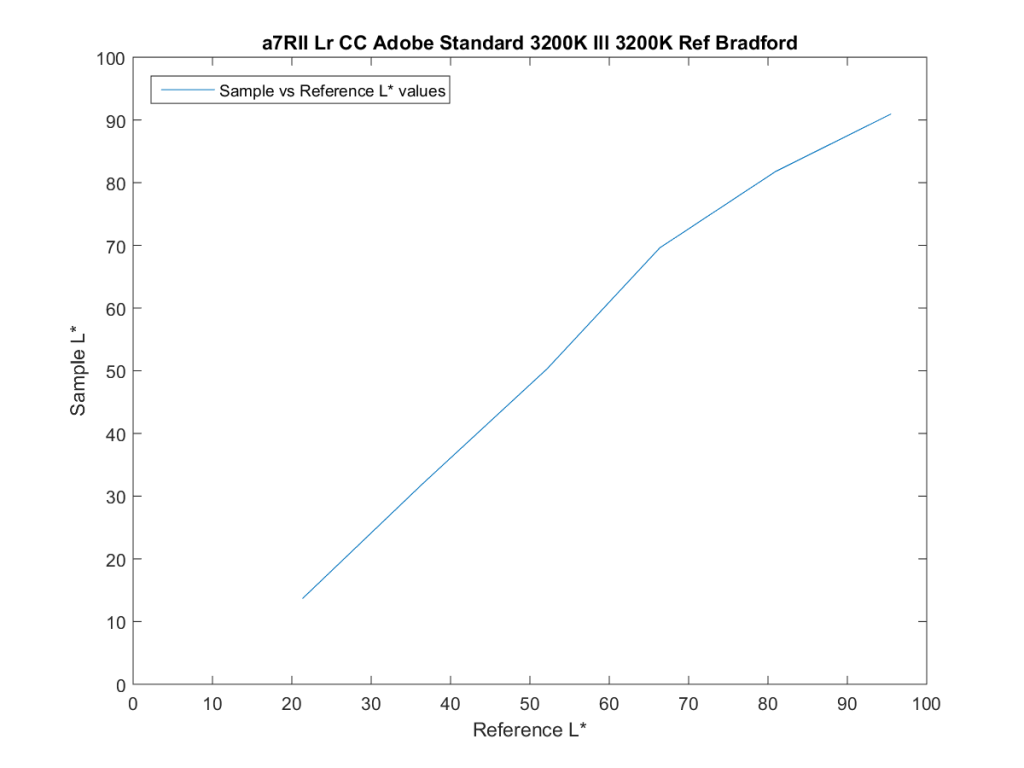
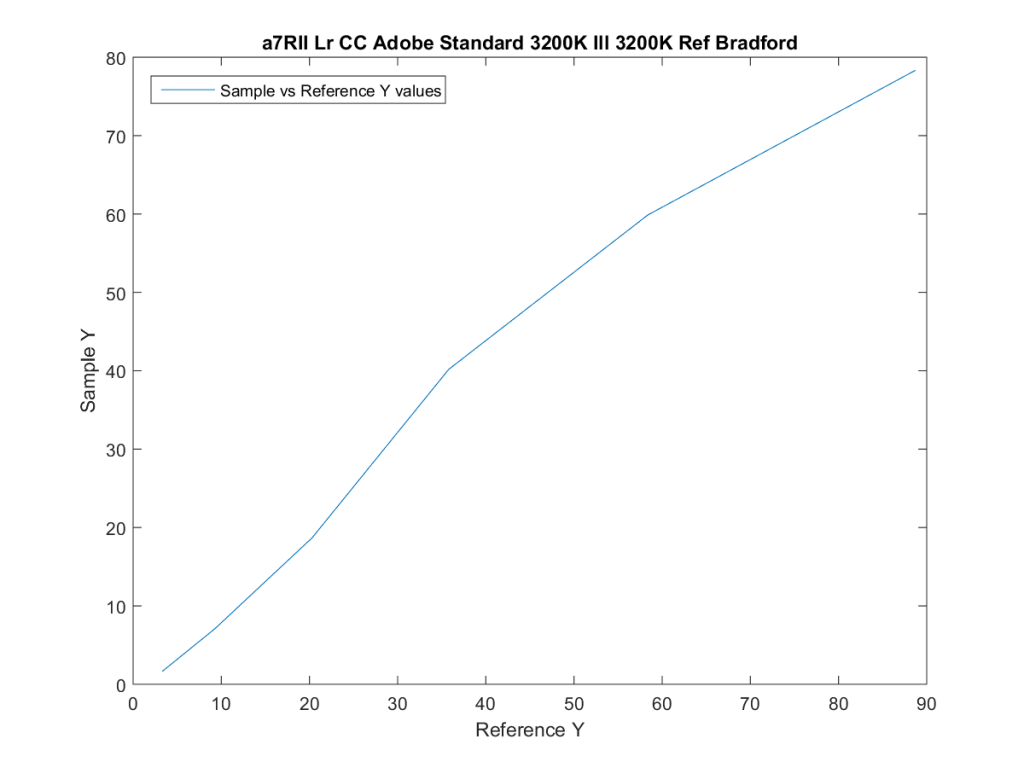
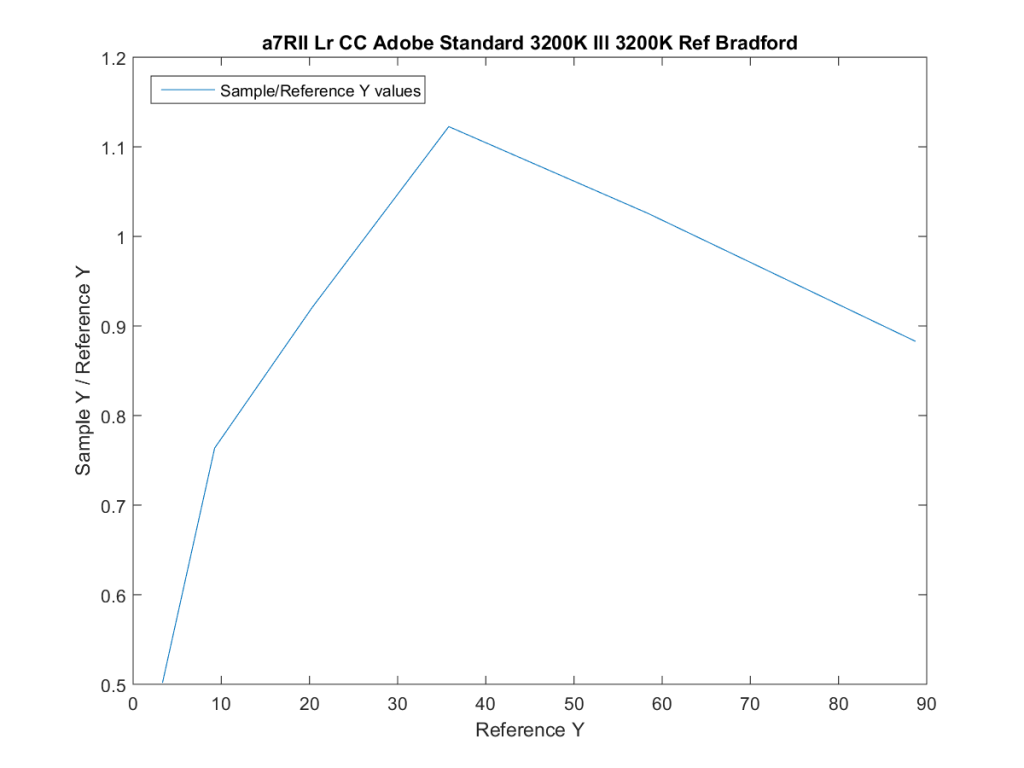

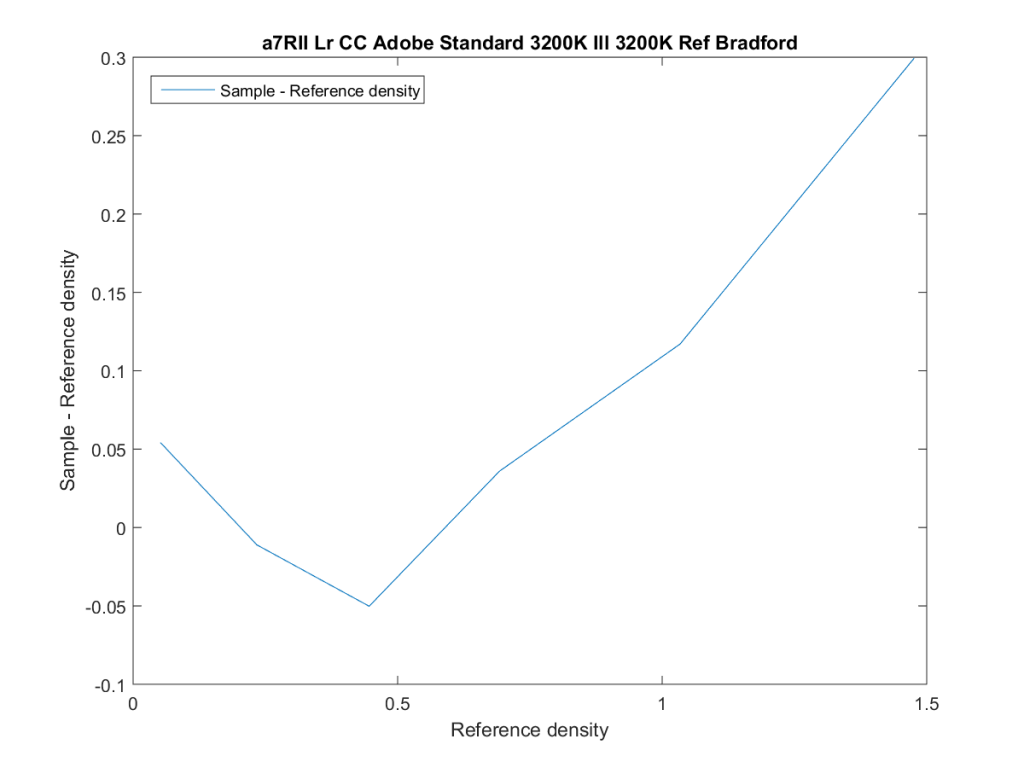
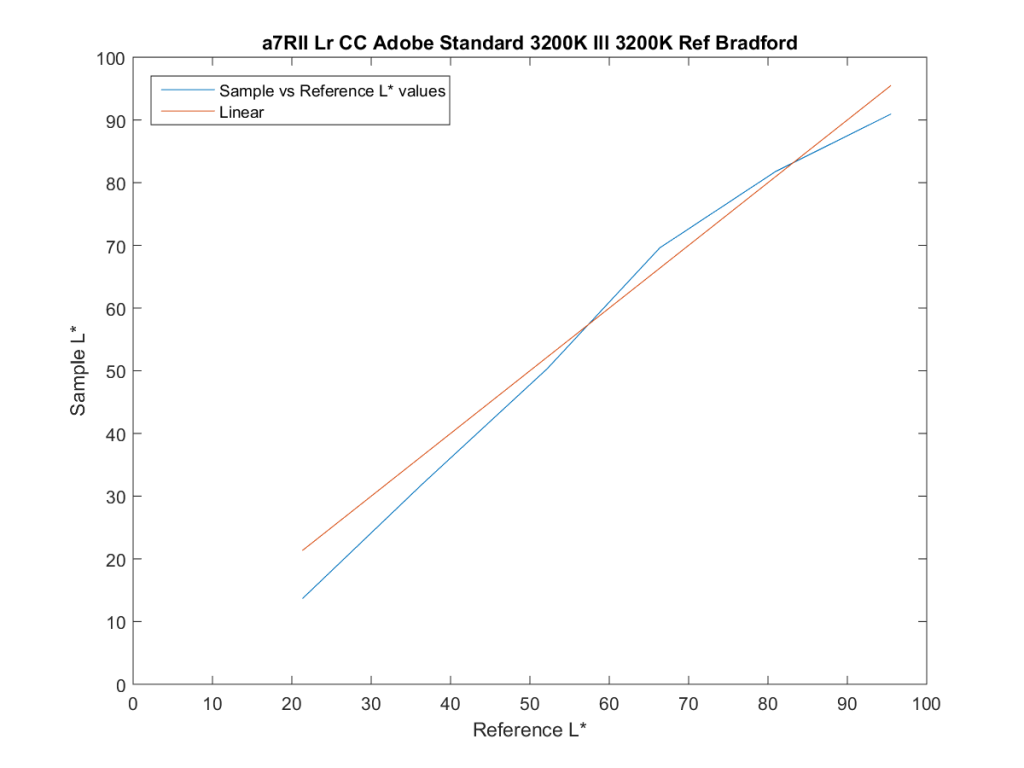
Leave a Reply